Abstract
Studies were performed in the rat to determine the effect of lithium on electrolyte transport in distal portions of the nephron since steep corticomedullary gradient for lithium has been demonstrated and ionic competition and/or substitution of lithium for sodium and potassium may play a role in inhibition of vasopressin-induced water transport. During the intravenous infusion of LiC1, in the absence of volume expansion and at plasma levels of 2-5 mequiv/liter of Li, maximum urine con-entration was inhibitied. Under the same conditions lithium administration impaired potassium secretion and urinary acidification and resulted in a natriuresis. These results indicate that lithium affects electrolyte transport in the same nephron segments in which the action of vasopressin is inhibitied. In addition, evidence is provided that suggests that during the chronic administration of LiC1, the sustained increase in oral intake of water and urinary flow rate results from an increase in thirst as well as reduced renal concentrating ability.
Full text
PDF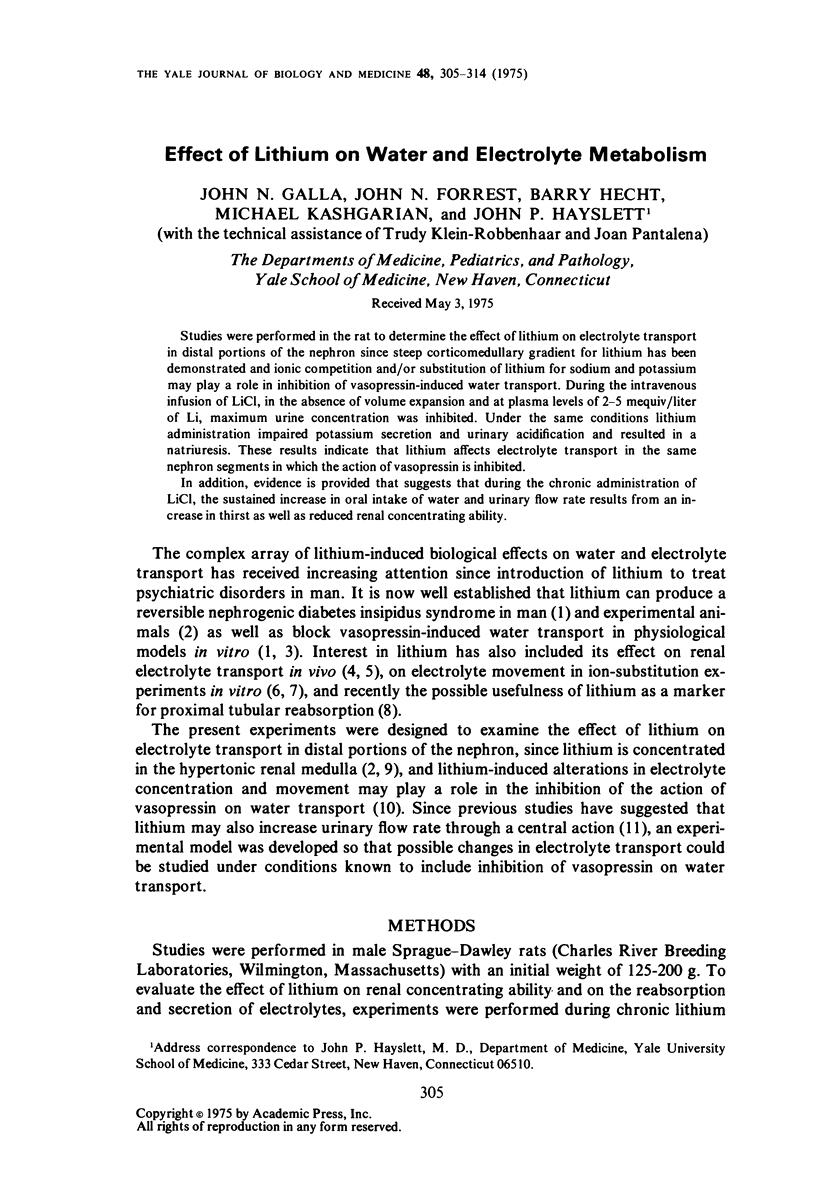
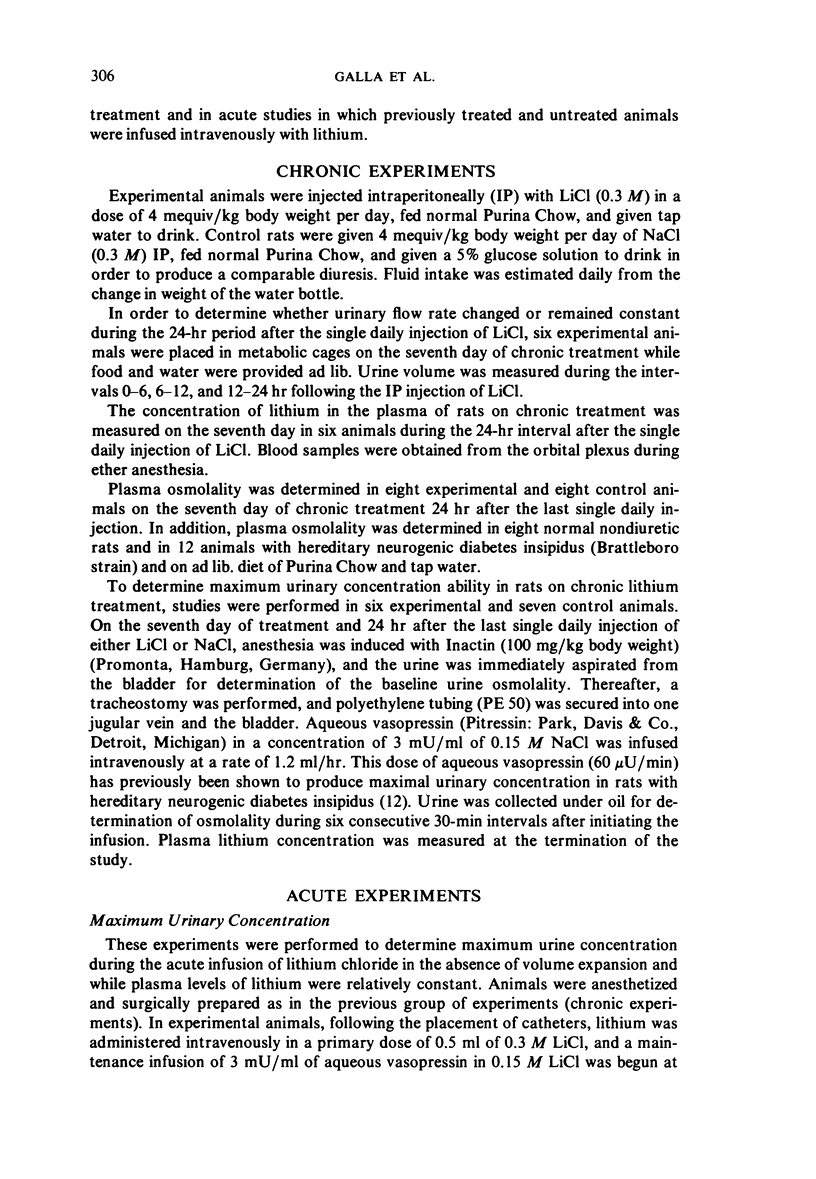
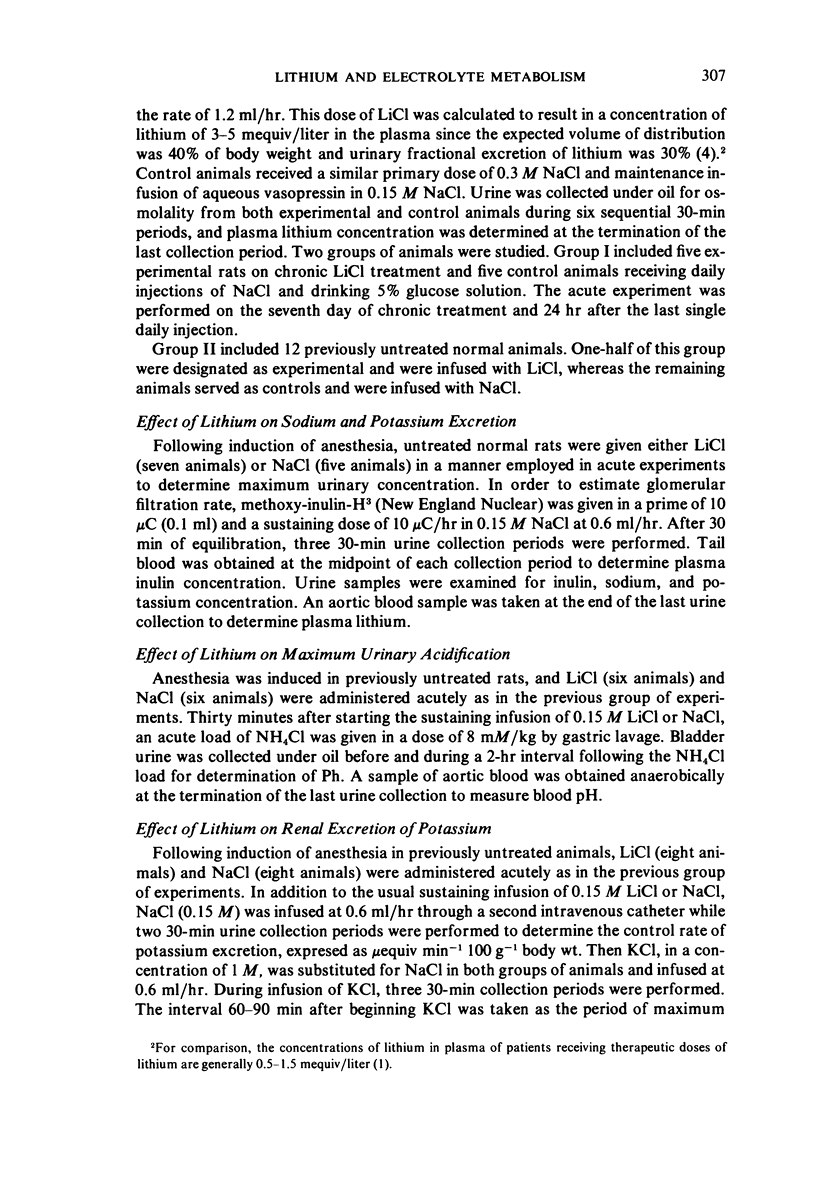

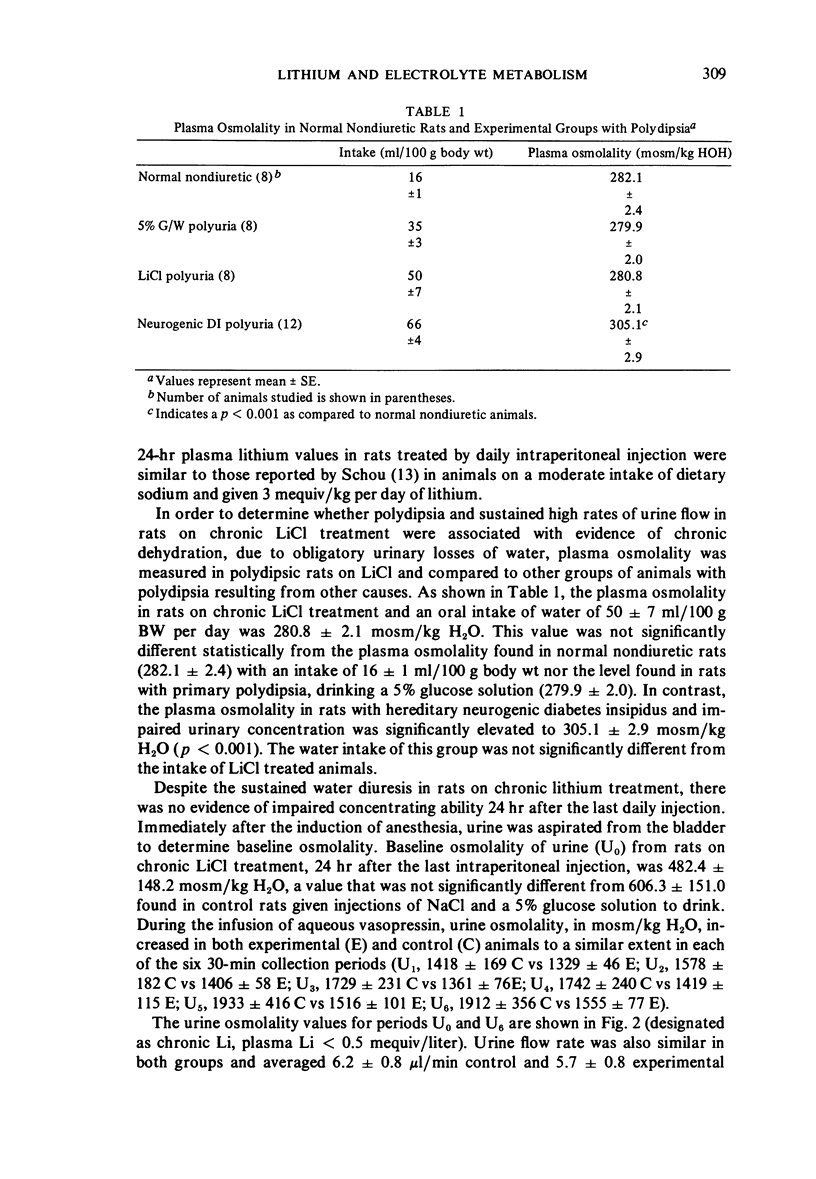
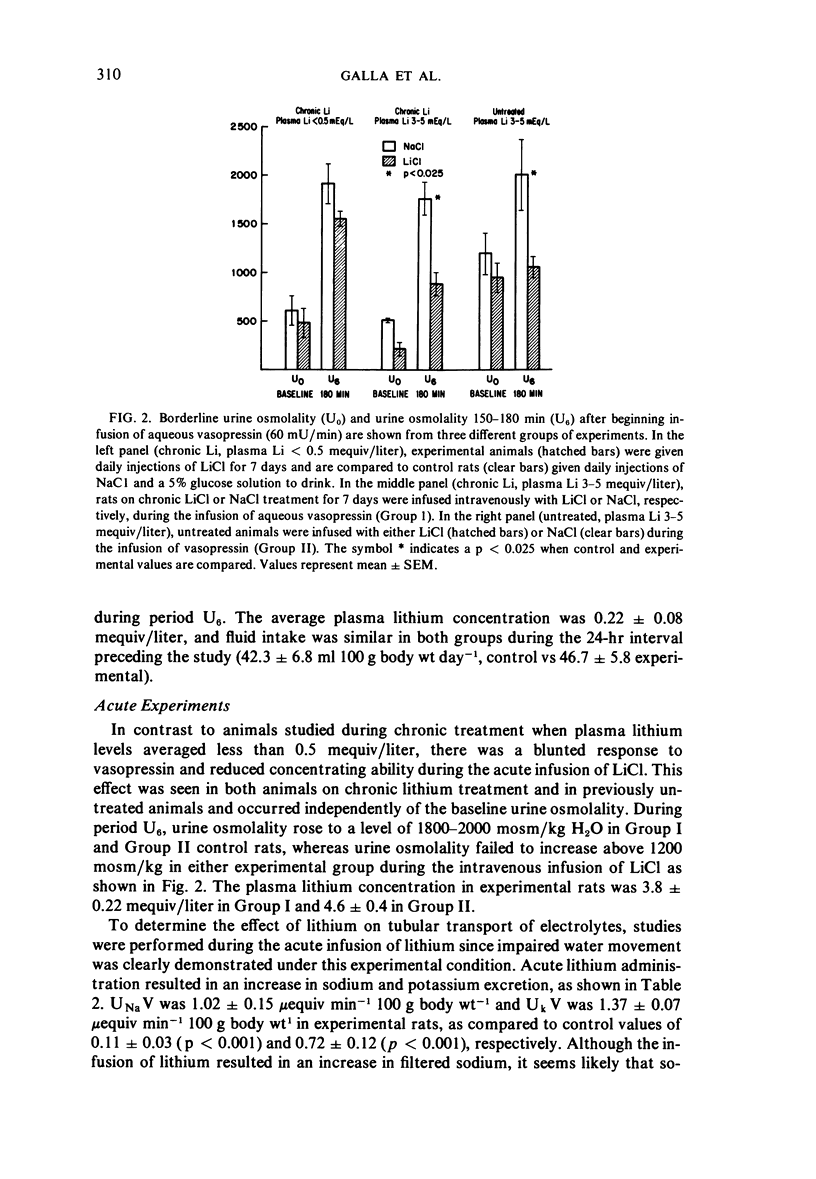
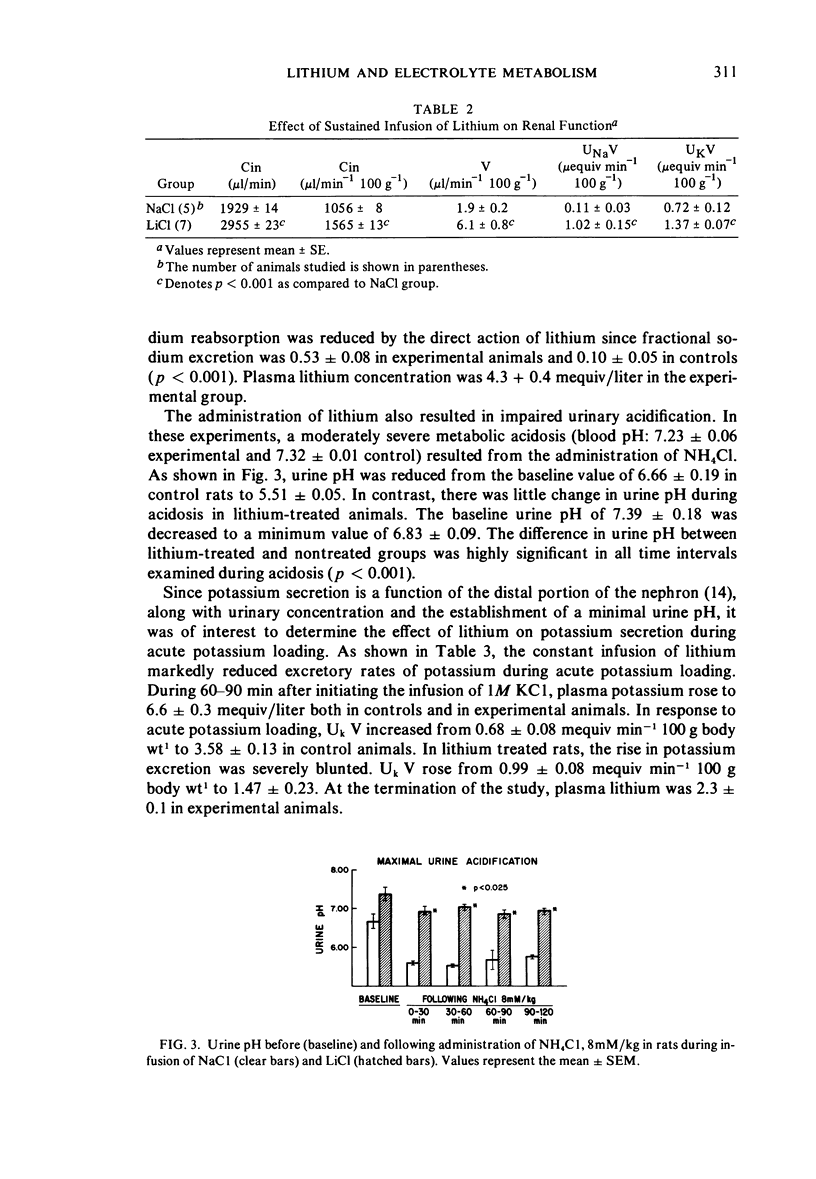
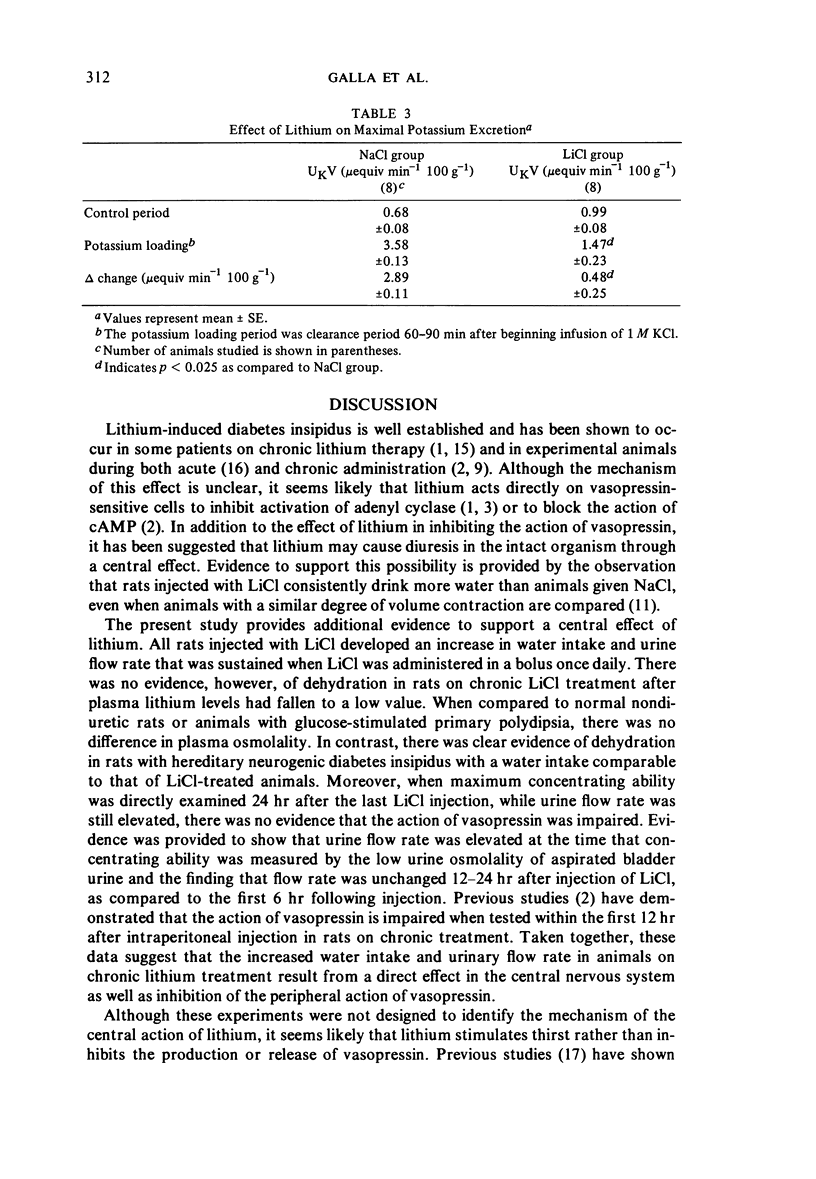
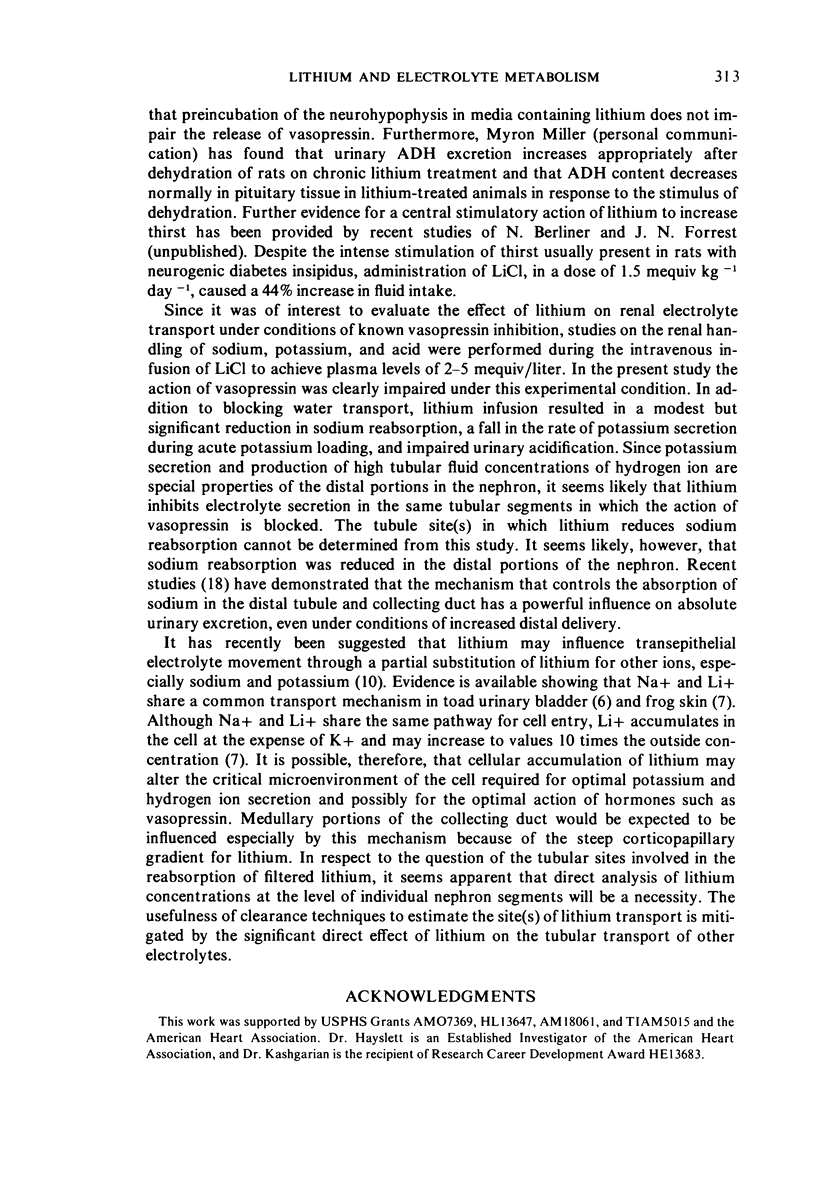
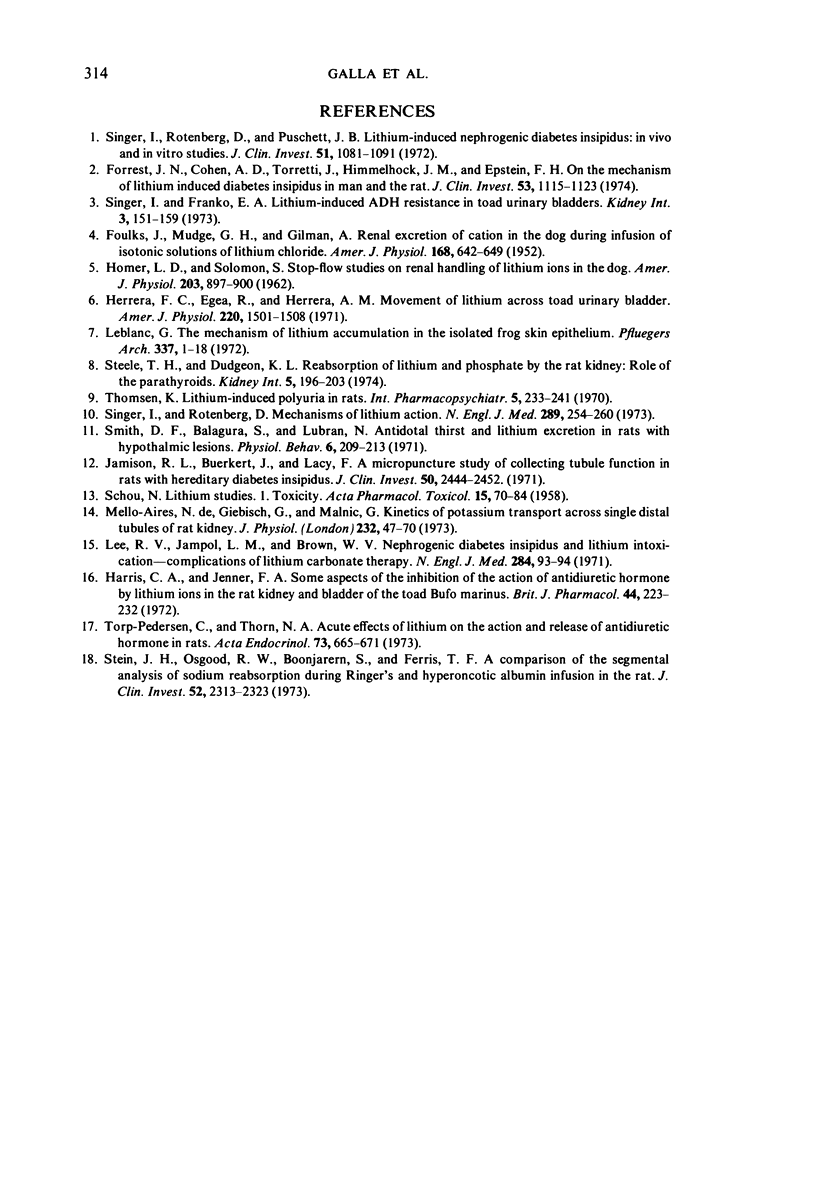
Selected References
These references are in PubMed. This may not be the complete list of references from this article.
- FOULKS J., MUDGE G. H., GILMAN A. Renal excretion of cation in the dog during infusion of isotonic solutions of lithium chloride. Am J Physiol. 1952 Mar;168(3):642–649. doi: 10.1152/ajplegacy.1952.168.3.642. [DOI] [PubMed] [Google Scholar]
- Forrest J. N., Jr, Cohen A. D., Torretti J., Himmelhoch J. M., Epstein F. H. On the mechanism of lithium-induced diabetes insipidus in man and the rat. J Clin Invest. 1974 Apr;53(4):1115–1123. doi: 10.1172/JCI107649. [DOI] [PMC free article] [PubMed] [Google Scholar]
- HOMER L. D., SOLOMON S. Stop-flow studies on renal handling of lithium ions in the dog. Am J Physiol. 1962 Nov;203:897–900. doi: 10.1152/ajplegacy.1962.203.5.897. [DOI] [PubMed] [Google Scholar]
- Harris C. A., Jenner F. A. Some aspects of the inhibition of the action of antidiuretic hormone by lithium ions in the rat kidney and bladder of the toad Bufo marinus. Br J Pharmacol. 1972 Feb;44(2):223–232. [PMC free article] [PubMed] [Google Scholar]
- Herrera F. C., Egea R., Herrera A. M. Movement of lithium across toad urinary bladder. Am J Physiol. 1971 May;220(5):1501–1508. doi: 10.1152/ajplegacy.1971.220.5.1501. [DOI] [PubMed] [Google Scholar]
- Jamison R. L., Buerkert J., Lacy F. A micropuncture study of collecting tubule function in rats with hereditary diabetes insipidus. J Clin Invest. 1971 Nov;50(11):2444–2452. doi: 10.1172/JCI106743. [DOI] [PMC free article] [PubMed] [Google Scholar]
- Leblanc G. The mechanism of lithium accumulation in the isolated frog skin epithelium. Pflugers Arch. 1972;337(1):1–18. doi: 10.1007/BF00587867. [DOI] [PubMed] [Google Scholar]
- Lee R. V., Jampol L. M., Brown W. V. Nephrogenic diabetes insipidus and lithium intoxication--complications of lithium carbonate therapy. N Engl J Med. 1971 Jan 14;284(2):93–94. doi: 10.1056/NEJM197101142840209. [DOI] [PubMed] [Google Scholar]
- SCHOU M. Lithium studies. 1. Toxicity. Acta Pharmacol Toxicol (Copenh) 1958;15(1):70–84. doi: 10.1111/j.1600-0773.1958.tb00287.x. [DOI] [PubMed] [Google Scholar]
- Singer I., Franko E. A. Lithium-induced ADH resistance in toad urinary bladders. Kidney Int. 1973 Mar;3(3):151–159. doi: 10.1038/ki.1973.23. [DOI] [PubMed] [Google Scholar]
- Singer I., Rotenberg D. Mechanisms of lithium action. N Engl J Med. 1973 Aug 2;289(5):254–260. doi: 10.1056/NEJM197308022890508. [DOI] [PubMed] [Google Scholar]
- Singer I., Rotenberg D., Puschett J. B. Lithium-induced nephrogenic diabetes insipidus: in vivo and in vitro studies. J Clin Invest. 1972 May;51(5):1081–1091. doi: 10.1172/JCI106900. [DOI] [PMC free article] [PubMed] [Google Scholar]
- Smith D. F., Balagura S., Lubran M. Antidotal thirst and lithium excretion in rats with hypothalamic lesions. Physiol Behav. 1971 Mar;6(3):209–213. doi: 10.1016/0031-9384(71)90027-8. [DOI] [PubMed] [Google Scholar]
- Steele T. H., Dudgeon K. L. Reabsorption of lithium and phosphate by the rat kidney: role of the parathyroids. Kidney Int. 1974 Mar;5(3):196–203. doi: 10.1038/ki.1974.24. [DOI] [PubMed] [Google Scholar]
- Stein J. H., Osgood R. W., Boonjarern S., Ferris T. F. A comparison of the segmental analysis of sodium reabsorption during Ringer's and hyperoncotic albumin infusion in the rat. J Clin Invest. 1973 Sep;52(9):2313–2323. doi: 10.1172/JCI107420. [DOI] [PMC free article] [PubMed] [Google Scholar]
- Torp-Pedersen C., Thorn N. A. Acute effects of lithium on the action and release of antidiuretic hormone in rats. Acta Endocrinol (Copenh) 1973 Aug;73(4):665–671. doi: 10.1530/acta.0.0730665. [DOI] [PubMed] [Google Scholar]
- de Mello-Aires M., Giebisch G., Malnic G. Kinetics of potassium transport across single distal tubules of rat kidney. J Physiol. 1973 Jul;232(1):47–70. doi: 10.1113/jphysiol.1973.sp010256. [DOI] [PMC free article] [PubMed] [Google Scholar]


